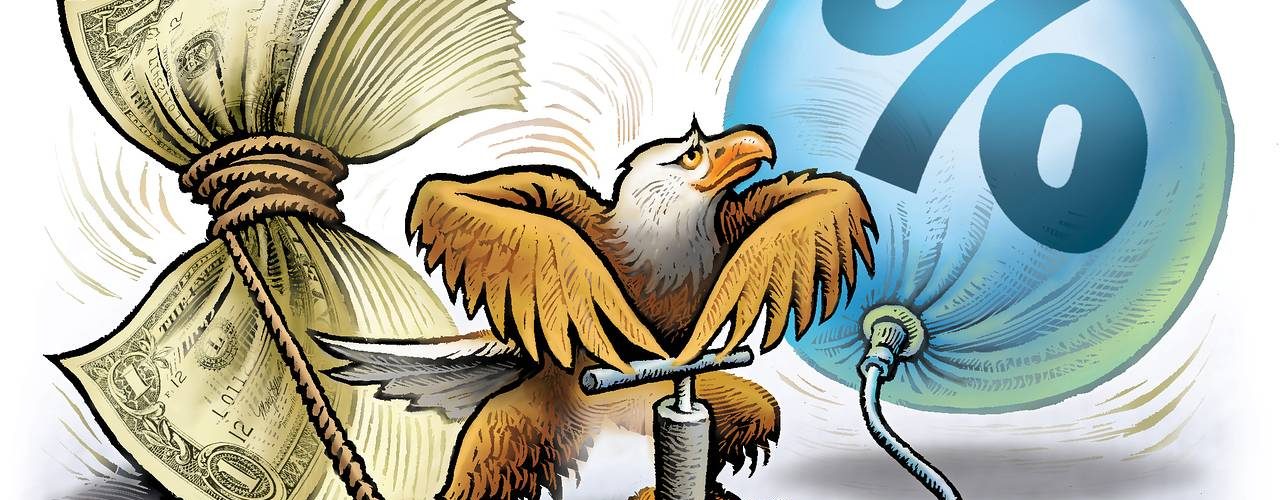After rising 27%—as measured by the S&P 500 SPX, -1.84% —last year, stocks are off to a disappointing start. Yet with inflation ripping at 7% and 10-year bonds TMUBMUSD10Y, 1.885% and CDs yielding below 2%, attractive alternatives to stocks for ordinary investors are scarce.
COVID, the Fed now bent on tightening and President Joe Biden’s woes may dominate the headlines but these should not deter equity investors.
Omicron is highly contagious but not nearly as lethal as Delta and predecessor variants. By summer, we may have substantial herd immunity between those individuals that keep up with vaccinations and those who emerge from infections with antibodies.
Life getting back to normal
COVID would become endemic and as new drugs like Pfizer’s PFE, -1.53% Paxlovid come into significantly greater use, life will return to some semblance of normal.
Since the Korean War, no similar surge of inflation has been broken without a recession but the Fed’s expected response—four interest rate increases over nine months—pale by comparison to Chairman Paul Volcker’s aggressive interest rate hikes in 1979 and the early 1980s.
My colleague Rex Nutting does not expect a big impact on economic activity and neither do I.
Consumers and businesses are sitting on about $3 trillion in unspent COVID stimulus payments, pay hikes for those workers in strong bargaining positions, and profits that have not yet been distributed to shareholders or reinvested.
Americans will keep on spending even if forced to consume $50 wines and prime rib in curbside igloos and attend concerts in the Metaverse.
Stocks have thrived
A one percentage point increase in the federal funds rate won’t take the 10-year Treasury much above 2%. Historically stocks have thrived with interest rates much higher.
With Donald Trump waiting in the wings to run again and Powell’s preference for tight labor markets, monetary policy won’t be aggressively restrictive. We are likely in for a period of sustained inflation and reasonably decent real growth.
No one can ever rule out near-term volatility. Uncertainties abound, from a threatened Russian invasion of Ukraine to the prospects for some version of Build Back Better getting through Congress. And during pandemics, the forecasts of business leaders, pundits and economists are proving less than useful.
Consequently, with stocks selling near record highs, investors facing college or other immediate large expenses this year should weigh selling now to put aside the cash they will need.
Inflation hedging
Longer-term investors should consider the strategies for an inflationary era.
Consumer staples, utilities and real estate are among the usual stock-market strategies. However, with supply-chain disruptions likely to persist, consumer-products manufacturers cannot always deliver as planned. The situations in Ukraine and Iran make energy supplies and the profitability of electrical generation uncertain and real-estate values have just experienced a historic run.
Gold GC00, 0.27% is often touted as a hedge against inflation but tanked as prices rose in 2021. Cryptocurrencies BTCUSD, -0.51% ETHUSD, -1.32% have gone mainstream, but their prices remain terribly volatile.
As interest rates rise, bond holders face capital losses. ETFs IPO, -4.33% FPX, -3.30% that track initial public offerings generally proved losers or delivered subpar returns as inflation rose in 2021.
Picking winners
Picking winners among stocks is extremely difficult. Who would have thought with movie theaters reeling that AMC AMC, -8.41% would be among the biggest winners of 2021, that with production curtailed by a shortage of chips Ford F, -3.22% would double in value, and that with Delta and Omicron again delaying the return to offices Peloton PTON, -3.51% would be among the worst-performing stocks of the year.
About four-fifths of the stock pickers at actively managed mutual funds underperform the S&P 500.
For those investing for the long term, a low-fee, passively managed S&P 500 index fund or similar vehicle remains best. Just put in a fixed amount each month.
Stocks in the S&P 500 are trading at about 30 times earnings, and that’s about 14% above the norm for the last quarter century. However, the 25-year moving average and sustainable prices for U.S. equities have been rising for a generation as the economy shifts from capital-intensive manufacturing to high-tech and services.
During the recent recovery and inflation, businesses have raised prices relative to costs fast enough to deliver strong profits growth. Innovations inspired by COVID will likely beget even more-impressive productivity gains and with stimulus giveaways mostly ended, labor shortages should ease.
Stocks should continue to deliver earnings gains that exceed nominal gross domestic product growth. Not that we can’t have a correction and even a short-lived bear market but overall, a broad-based index fund like those sold by Vanguard and USAA will beat chasing fads, ruminations of opinion leaders, and stock pickers.
Source: MarketWatch










